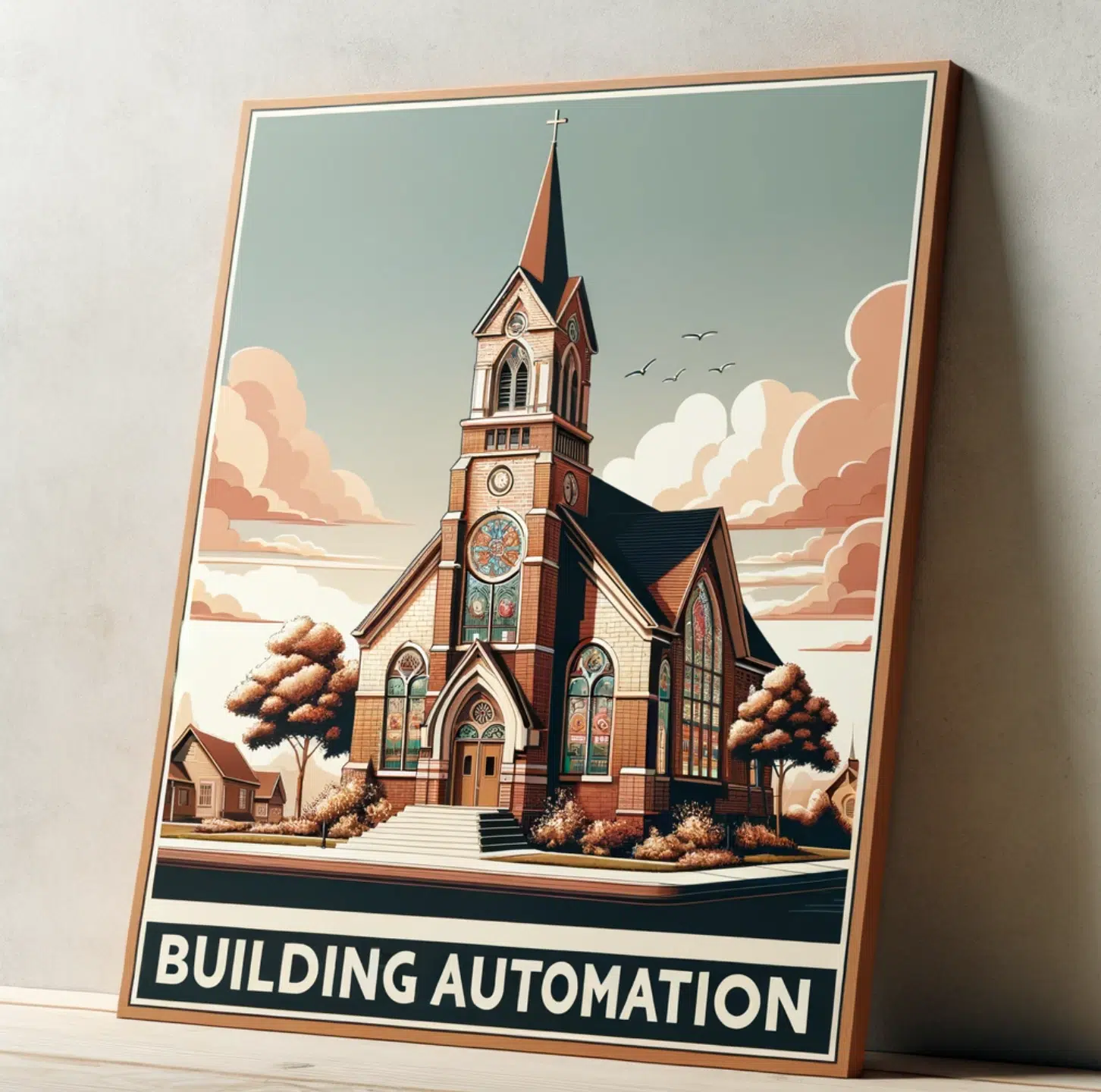Elevating Sacred Spaces: The Blessing of Building Automation Systems for Churches

In the heart of every church leader and facility manager lies the mission to create a worship environment that not only welcomes but embraces its congregants in comfort and reverence. As we navigate the complexities of managing sacred spaces in the modern world, the integration of Building Automation Systems (BAS) emerges as a divine solution to enhance the worship experience while stewarding church resources wisely. Let’s explore the transformative benefits of BAS for churches, transcending traditional facility management to nurture a thriving spiritual community.
How BAS Enhances the Worship Experience with Optimal Environment Control
The essence of a meaningful worship experience lies not just in spiritual engagement but also in the physical comfort and ambiance that supports this engagement. A Building Automation System (BAS) plays a pivotal role in managing and optimising the environmental aspects of the worship space, focusing on climate control and lighting, to foster an atmosphere that enhances spiritual connection.
Imagine entering a place of worship where the air is fresh, free from disruptive fragrances, and the temperature is finely tuned to the season, creating a welcoming and comfortable environment from the moment you step in. The lighting is thoughtfully adjusted to complement the mood of the service, whether it be the solemnity of a reflective prayer session or the joy of a celebratory gathering, adding depth to the spiritual experience without overwhelming the senses.
By precisely managing these environmental factors, a BAS ensures that congregants can immerse themselves fully in the spiritual journey, undistracted by discomfort or unsuitable conditions. This meticulous attention to creating an optimal worship environment underlines the importance of a seamlessly integrated building management system in enhancing the overall quality of the worship experience.
Wise Stewardship Through BAS Energy Efficiency and Cost Savings
Churches are often tasked with making the most of limited resources, a challenge that a BAS addresses directly by enhancing energy efficiency and reducing operational costs. With detailed energy usage data at their fingertips, church leaders can identify and implement changes that lead to substantial savings. These savings can then be redirected towards mission-critical activities, be it community outreach, building maintenance, or service enhancements. The ability of a BAS to adjust to the unique scheduling needs of religious events ensures that energy is used judiciously, aligning with the stewardship values of the church.
Are Building Automation Systems Scalable to Serve Churches of All Sizes?
Whether it’s a quaint chapel or a majestic cathedral, the scalability of a building automation system ensures that churches of any size can benefit from its integration. Smaller churches might leverage BAS for straightforward climate and light management, while larger facilities can take full advantage of sophisticated monitoring and control over extensive HVAC, lighting, and audio-visual systems. This scalability means that as churches grow and evolve, their BAS can adapt, providing a continuous return on investment.
How BAS Supports Community Outreach and Environmental Stewardship
A BAS aligns with the church's mission beyond the walls of the sanctuary, supporting community outreach and environmental stewardship initiatives. By reducing energy consumption and the church’s carbon footprint, a BAS embodies the care for Creation, resonating with the church’s call to protect and preserve our shared environment. This commitment to sustainability can inspire congregants and the wider community, fostering a collective effort towards a more responsible and compassionate world.
Preserving Tradition While Embracing Modernity
The thought of integrating modern technology into historical or traditional church buildings can evoke concerns about complexity and intrusiveness. However, modern BAS systems, especially those offered by experts like Tri-Star Automation, are designed with adaptability and sensitivity in mind. Tailored to meet each church’s unique needs and architectural nuances, these systems ensure that technology enhances rather than detracts from the spiritual and community goals of the church.
In Conclusion
The integration of Building Automation Systems into church facilities represents a profound opportunity to enhance the worship experience, steward resources wisely, and support the broader mission of the church. With the expertise and tailored approach provided by companies like Tri-Star Automation, churches can navigate the implementation of these systems with confidence, ensuring that sacred spaces are not only preserved but elevated for future generations. In embracing BAS, churches affirm their commitment to nurturing both the spiritual well-being of their congregation and the physical world we are entrusted to care for.
